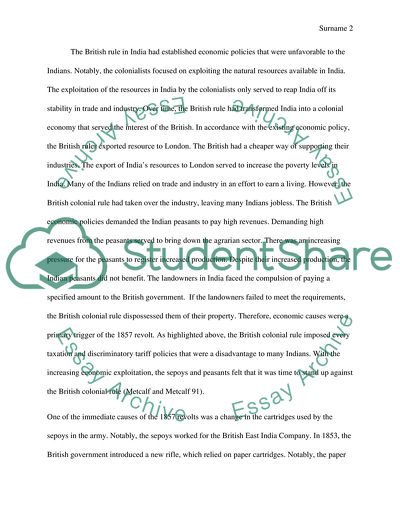Cite this document
(“Revolt of 1857 Essay Example | Topics and Well Written Essays - 1750 words”, n.d.)
Retrieved from https://studentshare.org/history/1687273-revolt-of-1857
Retrieved from https://studentshare.org/history/1687273-revolt-of-1857
(Revolt of 1857 Essay Example | Topics and Well Written Essays - 1750 Words)
https://studentshare.org/history/1687273-revolt-of-1857.
https://studentshare.org/history/1687273-revolt-of-1857.
“Revolt of 1857 Essay Example | Topics and Well Written Essays - 1750 Words”, n.d. https://studentshare.org/history/1687273-revolt-of-1857.


